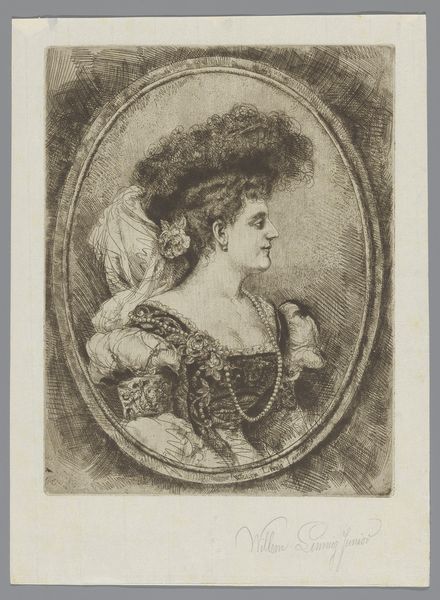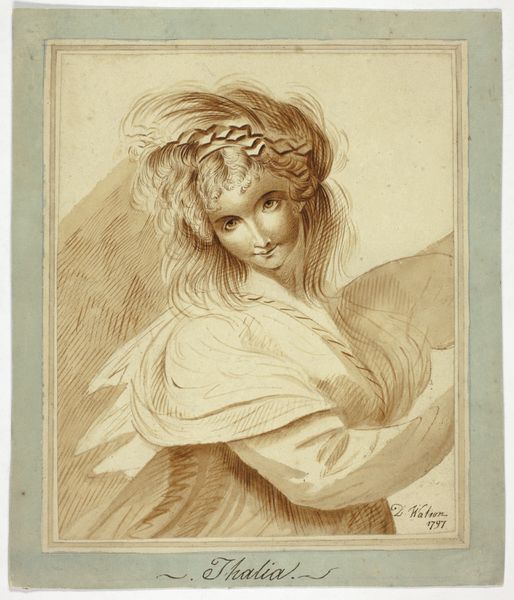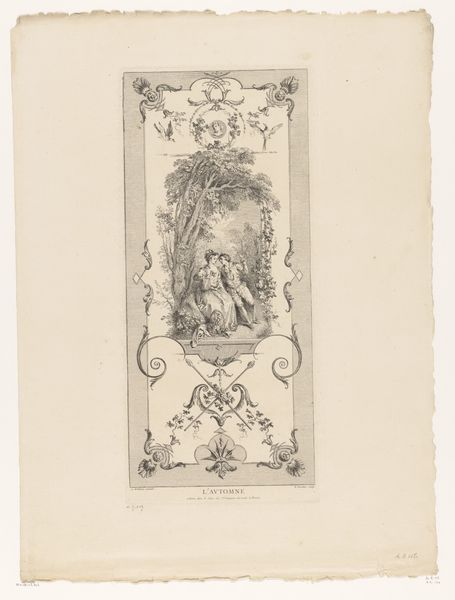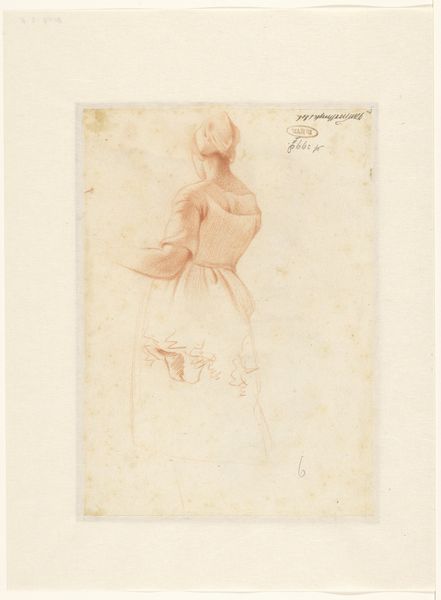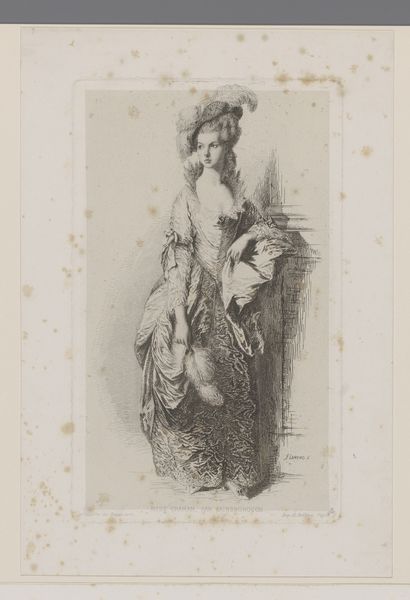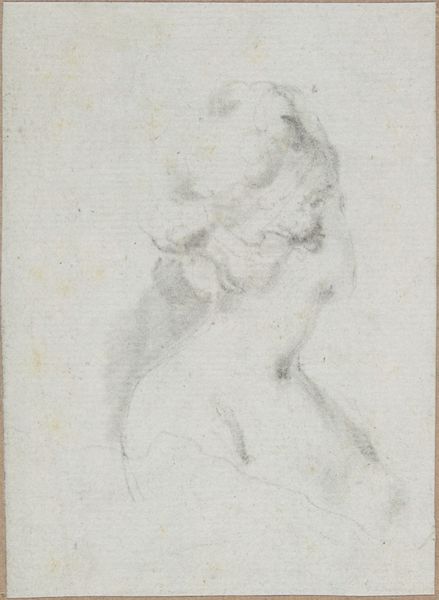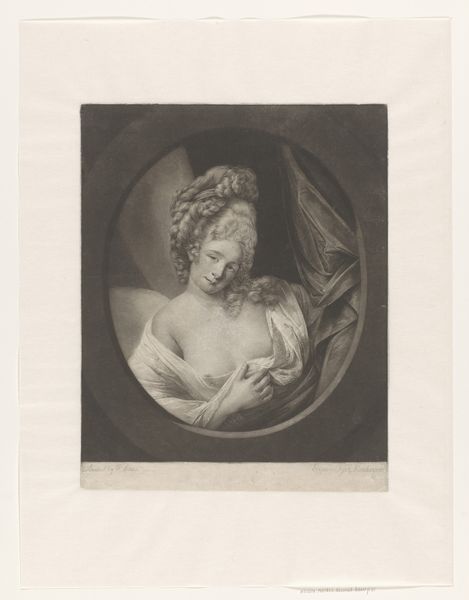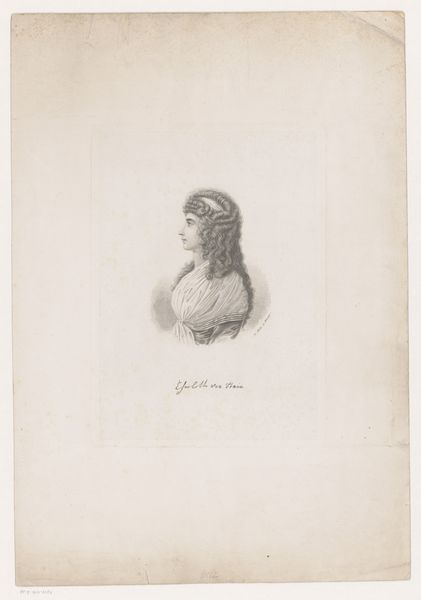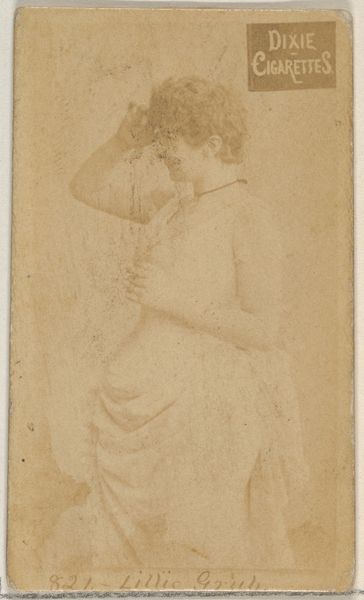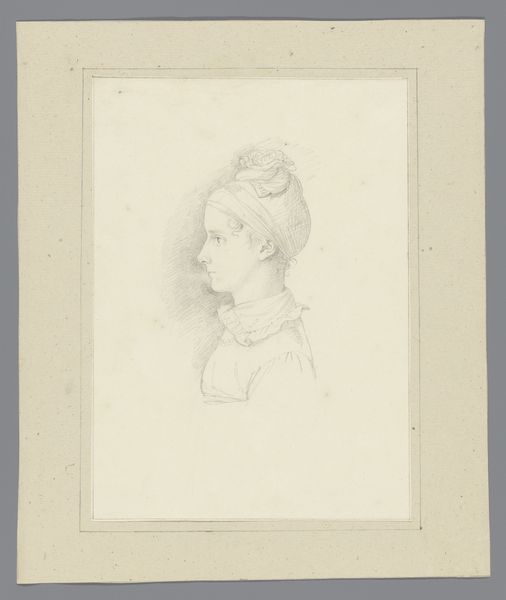
drawing, print, pencil, charcoal
#
portrait
#
drawing
#
neoclacissism
# print
#
charcoal drawing
#
pencil drawing
#
pencil
#
charcoal
#
academic-art
Dimensions: 18 3/16 x 14 1/4 in. (46.2 x 36.2 cm)
Copyright: Public Domain
Curator: This drawing is entitled "Portrait of Madame Dugazon as Nina," completed in 1788 by Joseph Jean Bernard and housed at the Metropolitan Museum of Art. Editor: It's fascinating, isn't it? A little melancholic perhaps, though rendered with extraordinary delicacy. I am immediately struck by the profusion of line work in the depiction of Madame Dugazon's coiffure and dress. Curator: Indeed. Note the artist's skilled application of line in charcoal and pencil, particularly the academic focus evident in creating tonal values across her silhouette and capturing Neoclassical ideals. One can analyze this choice within a historical and symbolic context of representing virtue and order. Editor: And yet, that virtuosity obscures, doesn't it? Consider the actual physical labor invested to create that hyper-ornate wig or dress; that’s not an insignificant thing to omit. The materiality becomes secondary to aesthetic concerns, the economic systems and labor erased by the portrait's very elegance. Curator: But isn't that sublimation of the material the entire point? It is a testament to the technical skill, which Bernard deploys to suggest deeper symbolic and structural qualities – the suggestion of controlled madness. Note how her expression aligns with conventions for portraying the tragic opera figure Nina; a study of artistic creation meeting theatrical invention. Editor: Perhaps. But if we focus on the means, the craft – and that frame, look closely, the ink slightly faded – the materiality points to class division. The work almost feels like a document of social artifice and, moreover, an attempt to smooth over uncomfortable truths beneath surface-level aesthetics. Curator: I would argue such surface is its key merit. By its careful arrangements of aesthetic structure, the work provides an opportunity to contemplate the tension between an individual’s identity and social roles, as played out within carefully delineated visual fields and theatrical stagings. Editor: It is interesting, all considered, how different readings may surface. One admires the line; the other acknowledges that such technical grace served also as a blindfold, and to erase production chains necessary for that Neoclassical elite subject’s appearance. Curator: Thank you for contributing those observations. Indeed, these contrasts can illuminate what may otherwise remain tacit, allowing deeper structural appreciation.
Comments
No comments
Be the first to comment and join the conversation on the ultimate creative platform.
